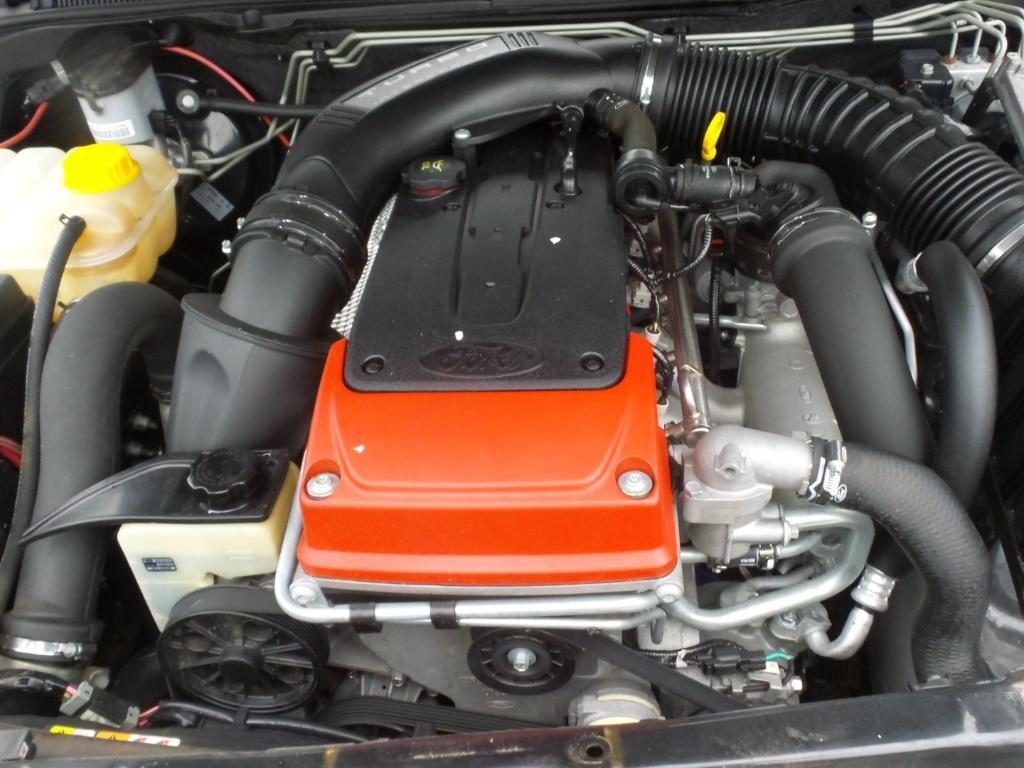IT GOES REALLY HARD BUT IDLE’S POORLY AND STALLS ALOT.
A complaint amongst our Barra turbo customer base especially in higher km engines. In fact we get so many of them we thought we would pen an article explaining the components roles in the operation of the Variable Cam timing system in the I6 engine and identification and repair or any faults.
It is general information only and not specific to your personal circumstances it is no replacement for professional advice but may assist in your understanding.
First in order to understand the fault it helps to have a clear understanding of the components involved in the variable cam timing system fitting barra engines and its operation. This enables a technician to focus on the correct components when faced with an issue. A good quality scan tool, with data logging function will assist greatly in ensure time and money are not wasted.
BA xr6 Turbo vehicle are fitted with an I6 Turbo engine with Variable inlet and exhaust cam timing. Both camshafts can vary over a 60 degree crank angle. Variation of the cam angle is made via two “Phaser” mechanisms pictured below:
Each phaser is actuated hydraulically by the direction of engine oil under pressure by the engine oil directed into one of two ports inside the Phaser one is called the “retard port” and as the name dictates retards the cam timing and the other is as one may guess names the “advance port” and does as it names dictates. OCV or “Oil Control valve” situated next to the each phaser are responsible for controlling the flow of oil into the retard or advance ports and are controlled by Pulse width modulation or Duty Cycle from the vehicle powertrain control module. OCV are pictured below. There is one for each camshaft.
If when scanned wtih P1380 Camshaft position accuator fault, check the condition of the Oil Control Valve and circuitry for open or short circuit the most common cause of this issue is wiring short or open circuit or a faulty PCM.
This bears no relationship to the cam angle sensor which communicates the position of the camshaft to the PCM via a sensor located at the rear of the cylinder head. Pictured below. Codes related to the camshaft positioned sensor are listed underneath.
Any diagnostic trouble code relating to timing or camshaft advance or retard will not be related to oil control valve or camphaser. We often experience customers confusing the Oil control valve as a cam angle sensor. The oil control valve is a valve only and does not provide any feedback to the PCM.
These CMP sensors are Variable reluctance sensors they interact with the engine crank angle sensor CKP to synchronise the ignition and fuel injection systems. They indicate position of the camshaft via the 3+1 reluctor wheel fitted to the end of each camshaft. Diagnostic trouble codes with the following designations usually relate to the cam angle sensor/circuitry or a pcm problem P0320 ignition engine speed input malfunction-p0340 CID1 Circuit Malfunction, p1340 CID2 cirecuit malfunction. These faults do not indicate a fault with the VCT phaser, oil control valve. Should a CAM angle sensor signal be missing the PCM will be unable to ID the camshaft position and VCT will be disabled but the vehicle will still run. Datalog the Camshaft position sensor to identify the presence of any signal. If both CMP signals fail the fuel injectors will cease to operate sequentially and the engine may run rough. Check your scan tool for CAM and CKP sync and any CMP failure mode diagnostic trouble codes.
Each cam angle sensor can be tested by measuring the resistance across the pins with a multimeter CMP resistance specification as per the manufacturer is 280-380 ohms. Then check the wiring harness for any shorts or open circuits.
A 3 + 1 tooth wheel on the front of each camshaft is read by the cam angle sensor. The Powertrain control module uses engine rpm, engine loan and throttle position to determine the optimum desired cam angle for both camshafts. It then controls the duty cycle output to each Oil control valve for intake and exhaust to control the camshafts individually to each single desired cam angle. The engine oil temp sensor supplied information to the PCM to enable adjustments to made in relation to changing oil vicosity.
This basic understanding of the Barra VCT system can assist us in diagnosis. Often customer attend our premises with a vehicle stalling at idle. They often state that the vehicle throttle is very responsive under load. Changing of ignition coils and or spark plugs dont seem to resolve the issue and no evidence of intake manifold leak is present under testing. Customers often change various items in order to resolve the problem but end up frustrated and out of pocket. .
Often when a Key on engine running test is undertaken a P1386 camshaft position timing over advanced bank 1 is observed. Primarily this will be accompanied by rough idle and good performance under load. This is indicative of the camshaft timing being out of position. When datalogged the CMP and CKP sensors will retain sync but the p1383 DTC is a hard fault and is not able to be deleted.
We suggest customers inspect the camshaft position at Top dead centre and inspect and repair any timing problem with the vehicle. It is adviseable to replace any damaged or worn timing components.
We hope this short article will help our customers in correctly diagnosing and isolating any issues related to p1386- Camshaft Position Timng Over retarded errors.
This advise is general only and we recommend you visit your mechanic for advise prior to engaging in any repairs listed. The purpose of the article is to entertain and assist but is not specific to your vehicle, your mechanical aptitude or your personal circumstances and no liability is accepted to misdiagnosis of your vehicle or repair.
If you need these repairs or diagnosis conducted please contact Athol Park Wreckers.






















